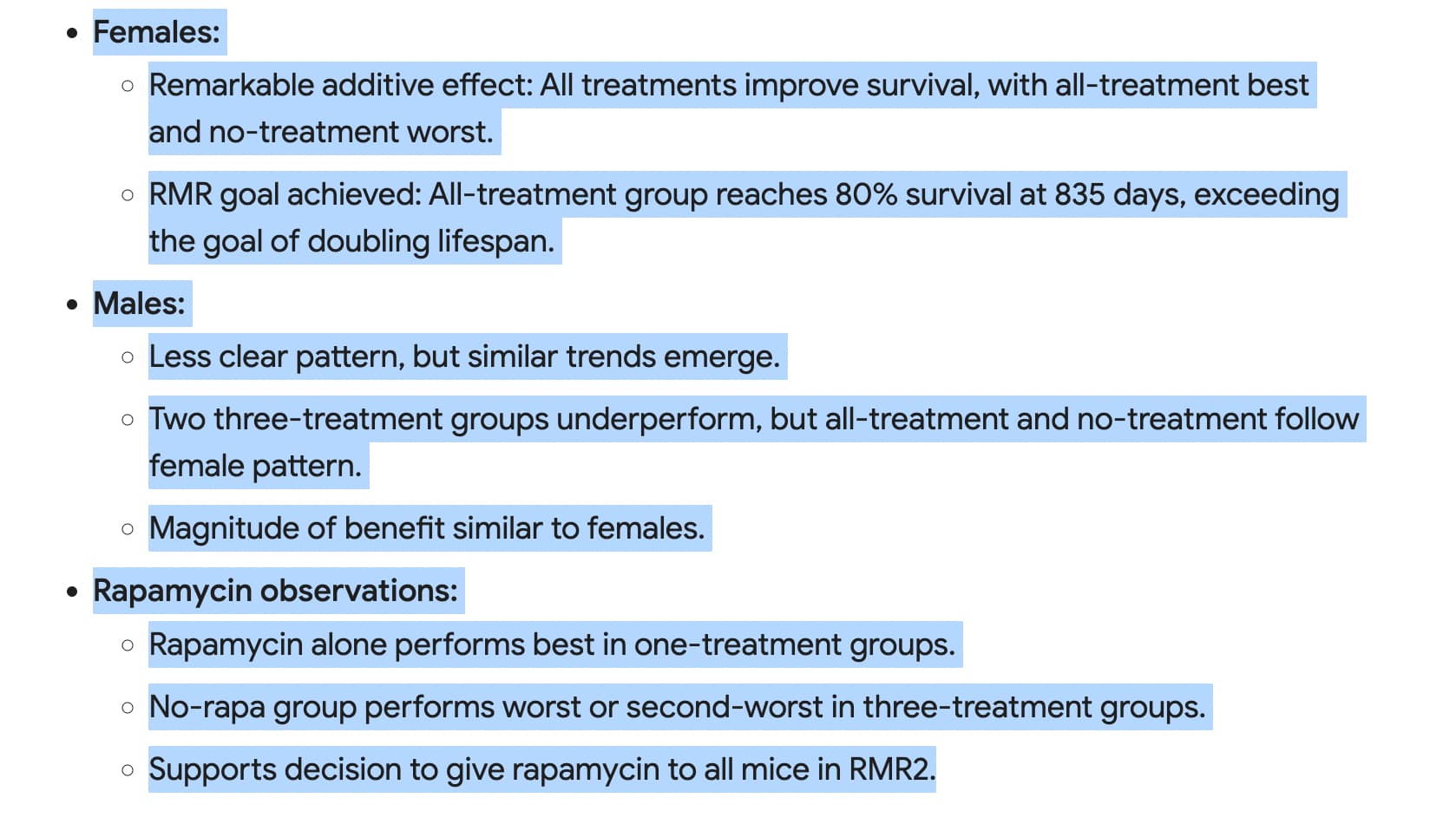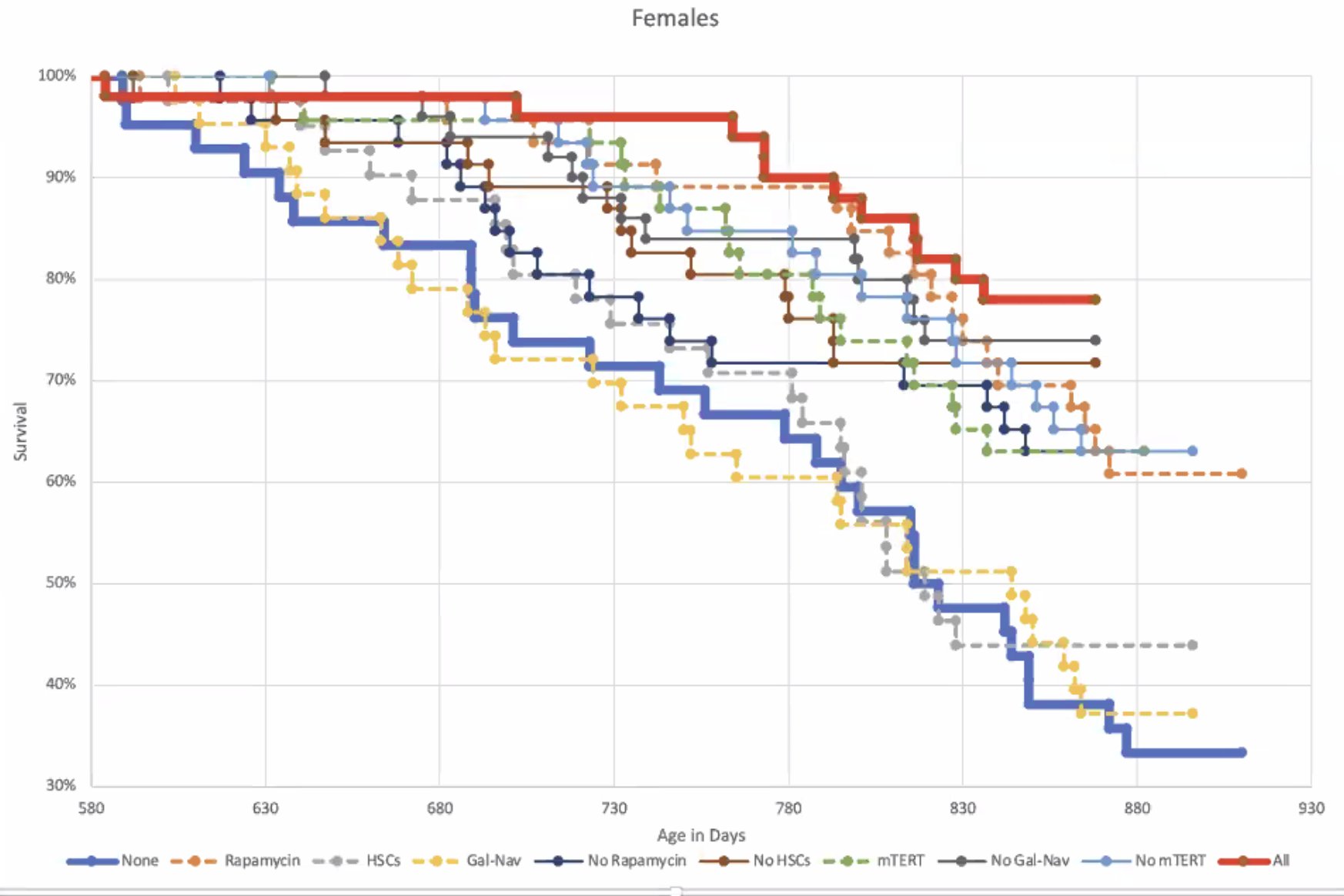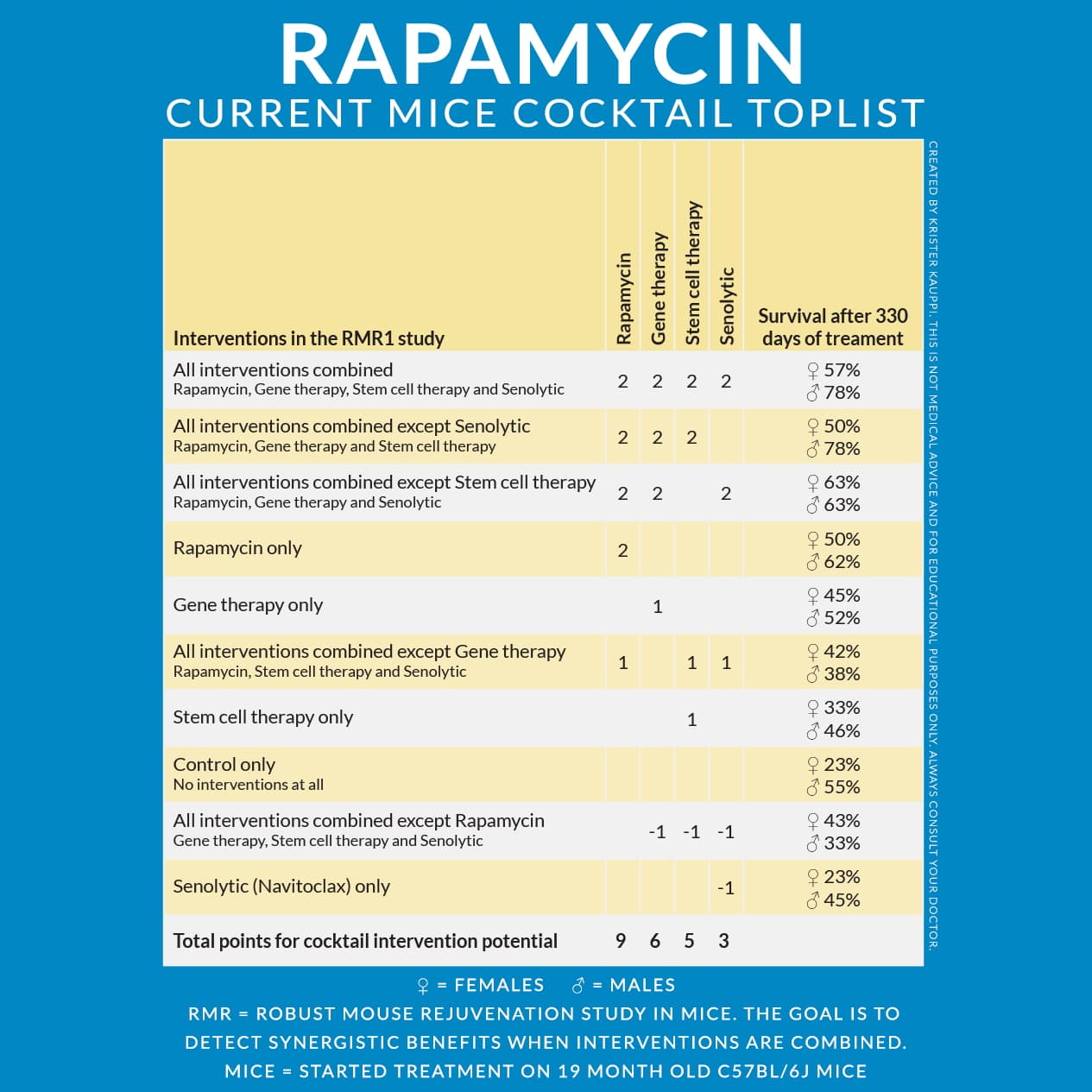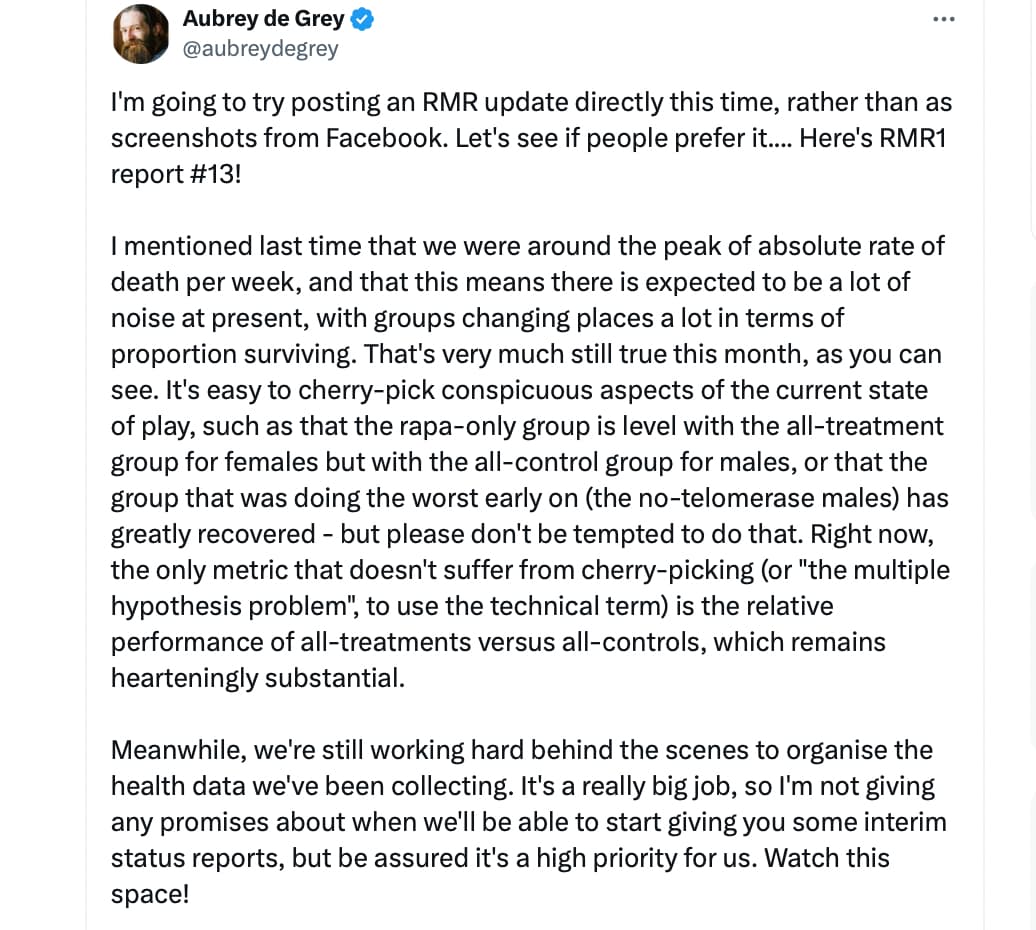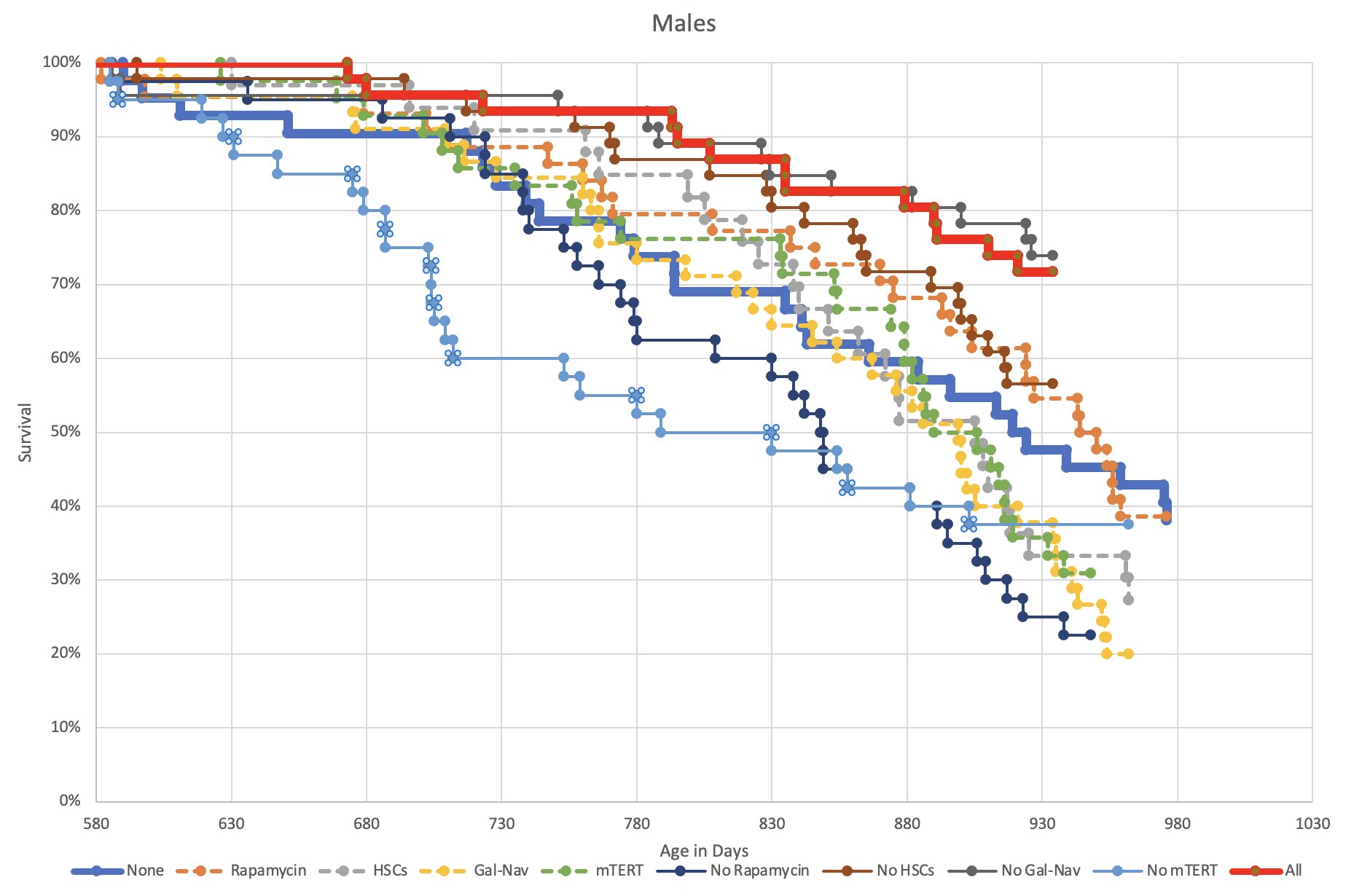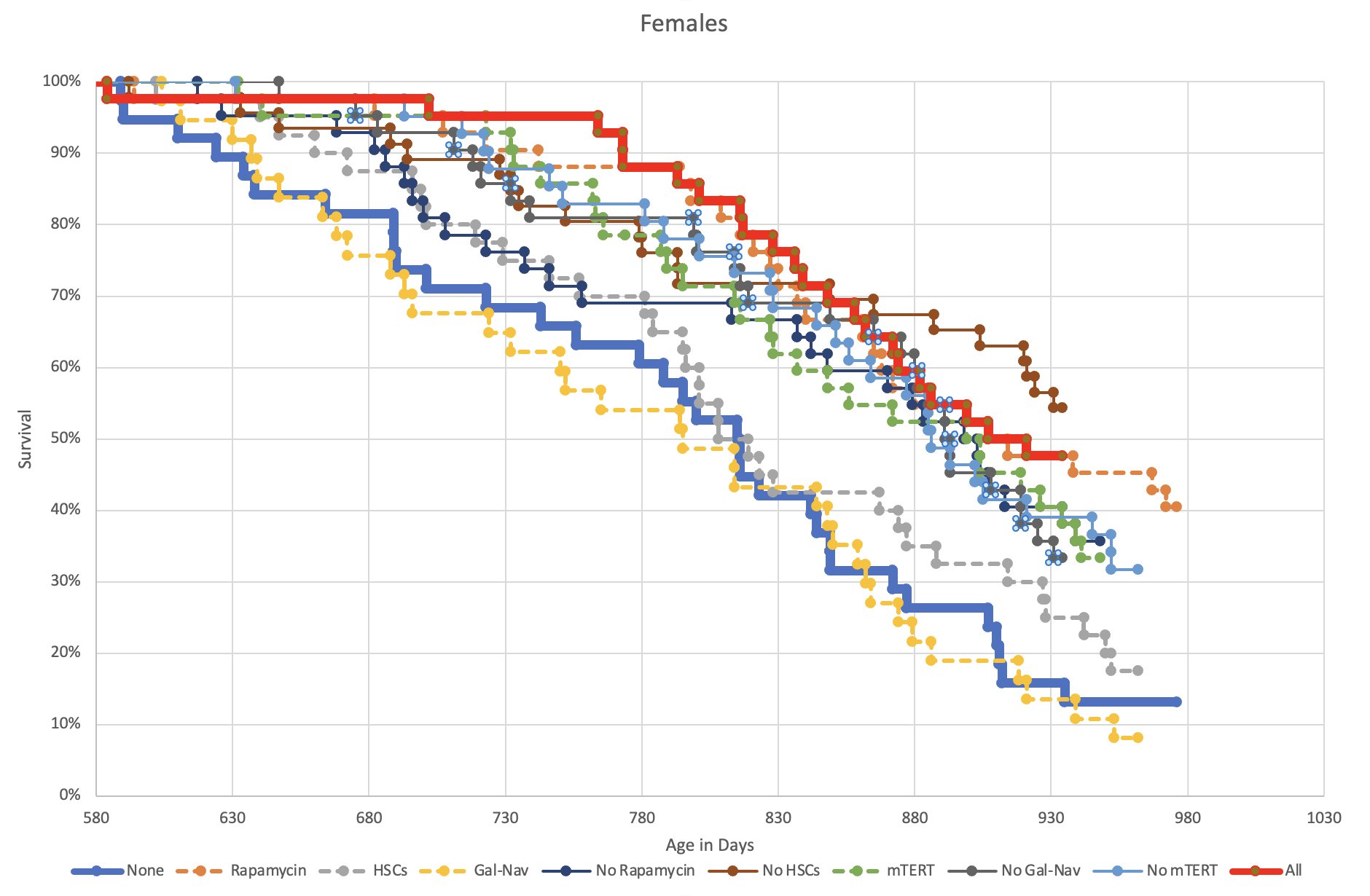RMR = Robust Mouse Rejuvenation by Aubrey de Grey Update Xmas 2023: rapamycin works the best
Could anyone explain the other three treatments besides Rapamycin?
Thanks @Joseph_Lavelle !
Ah. Conjugated Navitoclax as a senolytic. Brilliant.
Here’s an interview with more details on strategy and compounds used.
Aubreydegrey just shared the initial results of combining multiple known longevity interventions, and the results are epic. In the control group (blue), only 35% of the mice are still alive. Meanwhile, in the group that received all the interventions (red), close to 80% are still alive.
====================
aubreydegrey: Everyone please note that this is just females. The survival of control males is over 60% at present, so the average is just on 50%, as expected for C57Bl/6 of this age. (This strain is well known to be unusual in that males outlive females.)
https://x.com/Koningsbruggen/status/1750189964871057517?s=20
One of the most exciting things about this study is the fact that the interventions stack. I hope these will become available for humans in the near future as well.
Yes, the other treatments are
Mouse telomerase reverse transcriptase
And Nav-gal, a senolytic
If I’m reading the chart correctly, together they outperform rapamycin?
But the other two are not fit for humans yet, I believe. So, only Rapamycin is viable for us right now. D+Q might be a decent substitute for NavGal.
D+Q = Dasatinib + Quercetin?
Regarding the stacking of interventions in the above plot, less than 10% added on top of rapamycin effect for males, for females higher.
https://twitter.com/Koningsbruggen/status/1750278366576472490
I thought there also was a stem cell treatment via reduced conditioning method. Is that no longer a part of it?
Yes - HSC (hematopoietic stem cells). see this thread: Robust Mouse Rejuvenation Project - #12 by RapAdmin
Cool. @L_Hayes @DeStrider and others here is more info on that - seem very promising as it is not just one new type of small molecule, but represents a new class of longevity treatments (and is one example of the power of “replacement”
Thanks for this Krister! I always find Aubrey’s combined graphs a little painful to look at… the colors don’t show up so well, and it takes time to decipher what is going on with there RMR combinations. This is better!
==============
from @Krister_Kauppi
March update of Aubrey de Grey’s great longevity study (RMR 1). The goal with the RMR study is to extend maximum lifespan in middle-aged mice by combining different longevity interventions with each other.
The toplist is sorted by what works best in both genders and I will update the list as new data is presented. Here are my three takeaways on the data.
-
Rapamycin keeps playing a key role in several of the top synergistic cocktail combinations in the list. This supports my assumptions why I think Rapamycin or another mTOR inhibitor should be a base ingredient in the longevity cocktails which the Rapamycin Longevity Lab will engineer to extend maximum lifespan. Some people argue that Rapamycin is not an interesting intervention to solve aging because it just seems to slow down the aging process. I fully agree that Rapamycin as a single intervention is not so interesting and it will not lead to any radical life extension. Maybe it can give us humans 5-15 years extra but that is just speculation. If we are going to solve aging then we need much more than that. But the very interesting thing with Rapamycin is its potential to leverage the effects of non-pharmaceutical interventions when it’s combined with them.
-
Gene therapy as a single intervention still has quite similar lifespan effects as Rapamycin but since last month the difference has increased a bit. I’m still very curious to see if some researcher could do a study where they just combine Rapamycin and gene therapy to see the lifespan effect in mice. To make the cocktail even more powerful I would suggest adding Acarbose to it. Please keep me updated if someone starts such a study!
-
If we look at the top three ones on the list then maybe senolytics can be picked out of the equation. My guess is that it does not have any effect and creates just noise to the data. This is also well aligned with why “All interventions combined” and “All interventions combined except Senolytic” show very similar data.
As shown in the taurine studies, the effects of a senomorphic on senescent cells is far more powerful than a senolytic. Given that Rapamycin is a very potent senomorphic, it makes sense that it’s effects overshadow the effects of senolytics.
If you’re taking senomorphics, it makes senolytics almost obsolete.
And according to this data, if you’re a male mouse, senolytics are harmful to longevity.
If a material proportion of senescent cells are stem cells stuck in a failure of differentiation then killing them off could be harmful.
Due to the failure of the Mayo clinic trials on senolytics and other studies showing senolytics as less powerful than senomorphics, I will be removing them from my stack when I exhaust my current stock.
No more Resveratrol, Fisetin, Quercetin, Grape Seed Extract, etc…
I am not myself persuaded that the HDAC inhibitors actually are senolytics. They could easily be senomorphics.
Either way, they are not nearly as effective as Taurine or Rapamycin on senescent cell load. Therefore, I will forego their use until stronger data arrives.
Aubrey’s latest updated today:
https://x.com/aubreydegrey/status/1774482900773425608?s=20
More details on the Robust Mouse Rejuvenation Study:
